BY LINCOLN ANDERSON | They just kept on coming, one after the other…for six hours.
Longtime Soho and Noho artist residents testified in droves against the sweeping rezoning plan slated for their neighborhoods at Thursday’s City Planning Commission hearing.
According to Village Preservation, around 100 people testified — even though the hearing was inconveniently held right before the Labor Day weekend — with opponents of the plan outnumbering supporters by 9 to 1.
Most of those supporting the rezoning were from Open New York, a pro-real estate group that backs eliminating the city’s landmark and zoning protections and allowing unfettered development. Scorned by neighborhood residents as transparent shills, the Open New York “bro’s” have become the face of Mayor de Blasio’s Soho/Noho rezoning.
The City Planning Commission now has 60 days to vote on the mayor’s proposal. If they approve it, the rezoning then would go to the full City Council for a vote.
Brewer: ‘We need a different proposal’
Also at Thursday’s hearing, Manhattan Borough President Gale Brewer finally revealed her thinking on the hot-button rezoning — basically indicating she could not support it in its current form. After holding her own public hearing on the contentious scheme on Aug. 23, Brewer was expected to weigh in on the plan by Aug. 26. But she still has not issued her advisory opinion.

“There are so many challenges to this project,” she said. “We all have to come up with something that is different than the current proposal. I, too, am still working on my thoughts.”
Brewer said that the commercial F.A.R. (“floor area ratio,” a formula governing building size) endorsed in the plan “has to be reduced,” and that she also has concerns about potential rezoning-driven “demolition and [residential] displacement” in the area.
The B.P. also cited other points of concern that have been raised by the plan’s opponents, including the $75-per-square-foot (recently lowed from $100) artists’ “flip tax” that the rezoning would impose on apartment sales, plus locals’ desire to shift the focus to making 5 World Trade Center and the federally owned garage on Howard St. into affordable housing.
“This is perhaps the most challenging rezoning we’ve been involved in,” she said.
‘Significant setback’ for rezoning
Afterward, Village Preservation, in an e-mail recapping the hearing, hailed Brewer’s comments as a positive sign.
“As one of the main initiators of this rezoning process, Brewer’s criticisms amount to a significant setback for the plan — though it remains very much alive,” the group said.
The New York Post reported that B.P. Brewer’s misgivings could delay the City Council’s taking up the matter. In an article headlined, “Beep Bashes Blasio: A no on Soho rezone,” the tabloid said, “Her request for changes to the plan could mean that the City Council will not vote on it until after de Blasio leaves office.”
If that’s the case, Christopher Marte, the Democratic nominee for City Council District 1, would be in office, having succeeded the term-limited incumbent, Margaret Chin. Marte strongly opposes the current rezoning plan. De Blasio would also be out of office.
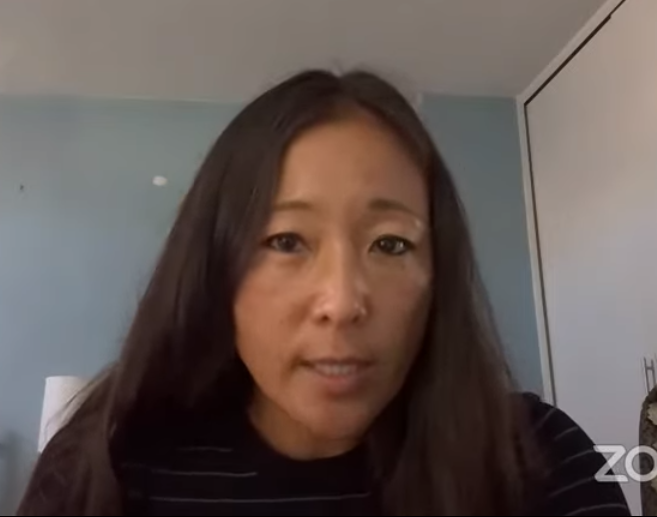
As Kirsten Theodos of TakeBackNYC put it, “Time is running out for Edison Properties to develop its two properties under a favorable regime.” Edison has two large open-air parking lots in the rezoning area.
Councilmemers could be the deciders
However, Andrew Berman, executive director of Village Preservation, said the rezoning’s fate will likely depend on whether a majority of the City Planning commissioners withhold support for it or the full City Council votes the plan down.
The councilmembers whose districts contain parts of the rezoning area and whose votes would carry the most clout — Chin, Carlina Rivera and Corey Johnson — did not testify on Thursday. Often, though, councilmembers do not publicly weigh in on issues until they arrive for a vote by the full City Council.
A month ago, Chin and Rivera called for unspecified changes to the Soho/Noho rezoning to guarantee that it would actually create affordable housing. So far, though, as reported by The Village Sun, there has been no sign their show of concern has resulted in any meaningful changes.
Meanwhile, Marte did testify at City Planning, saying, “This is not an application that will create affordable housing. This is not going to protect small businesses. This won’t improve the quality of life.
“The city even whitewashed Chinatown’s name, they called it ‘Soho East’: That is systemic racism,” he declared. “That is institutional racism.”
Allie Ryan, who is running versus Rivera in the Nov. 2 election for District 2 on the Neighborhood Party line, also testified against the rezoning.
Skepticism about affordable housing
Opponents have effectively argued that, due to gaping loopholes in the rezoning plan, plus the potential for massive profit for market-rate residential construction in Soho, Noho and Chinatown, developers would simply dodge creating affordable housing.
Testifying before the City Planning Commission, Assemblymember Deborah Glick reiterated her position that the rezoning should be rejected. Like others, she ridiculed the idea of achieving affordable housing through “trickle-down development.”

The rezoning plan predicts that it would result in 3,500 new units of housing, with 900 of these being for low- and moderate-income residents, created under the city’s Mandatory Inclusionary Housing program. But opponents say there’s no guarantee even a single unit of affordable housing would be built.
“If I thought basing affordable housing on luxury development would result in affordable housing and diversity, I’d support this,” Glick said.
On the contrary, she argued, the Soho/Noho rezoning would result in an overall loss of affordable housing in the area.
As for the proposed artists’ fund, which would be financed by the flip tax on artists’ apartment sales, Glick decried it as “an undefined sham.”
She further said that, while the city is spinning the rezoning as a critical effort to create affordable housing, one need only look at the map of the rezoning district and see the so-called “opportunity zones” in its corners — including Chinatown — which are earmarked for new buildings, to know what it’s all about.
“‘Opportunity zones’ for developers show luxury development is the core goal of this plan,” the assemblymember stated.
Agency commissioners push city plan
But Marie Louise Carroll, the commissioner of the Department of Housing Preservation and Development, said the rezoning would help fight “segregation and discrimination” that limits where people can live. She noted that a market-rate two-bedroom apartment in Soho currently averages $8,000 per month. She added that just 2 percent and 6 percent of residents are black or nonwhite Hispanic, respectively. She did not, however, mention the Chinatown portion of the rezoning area, where, opponents say, low-income Asian residents would face displacement pressure under the rezoning.

Anna Hayes Levin, one of the City Planning commissioners, challenged Carroll to respond to opponents’ charge that there are no guarantees any affordable housing would be created. For example, builders of “small developments” — with fewer than 25 residential units and under 25,000 residential square feet — could pay into a city affordable housing fund instead of constructing affordable units.
But Carroll contended that Mandatory Inclusionary Housing (M.I.H.) has been working around the city. She denied that developers have been avoiding building units under the program.
Gonzalo Casals, the commissioner of the Department of Cultural Affairs, discussed the artists’ fund, which he said would be disbursed not only to recipients in Soho, Noho and Chinatown but also in the Lower East Side and, in general, “Lower Manhattan.”
He said there would be a “peer-panel review” to “vet applications” for the funding.
Under the plan, people who own lofts that are joint live-work quarters for artists (J.L.W.Q.A.) — which is Soho and Noho’s current zoning for residential use — would have to pay the flip tax if they sell to nonartists.
Preservationist: ‘Would make area richer, less diverse’
But opponents said the city’s plan, in fact, would create a neighborhood that is less affordable since three-quarters of the new housing would be within the reach only of one-percenters.
Juan Rivero, special projects director for Village Preservation, said even if, hypothetically, 25 percent to 30 percent of the units built under the rezoning actually were affordable, the plan, over all, “will produce a richer, more expensive, less diverse neighborhood.” In fact, the area’s current least-well-off residents would not be able to afford the new affordable housing the plan might create, he noted.
Village Preservation’s Berman last Monday wrote to Chairperson Marisa Lago and the rest of the City Planning Commission, debunking the rezoning’s claims and offering suggestions on how to improve the plan.
Past affordable housing fails
Community Board 2 in June voted by 36 to 1 to reject the Soho/Noho plan. Testifying on Thursday, Jeannine Kiely, the board’s chairperson, cited as a warning the example of a similar rezoning, in Hudson Square, just to the west of Soho, in 2013. She noted that C.B. 2 had O.K.’d that rezoning — to allow residential use in a previously manufacturing-zoned area, like Soho and Noho — largely on the basis that it would provide mixed-income housing. Instead, she said, today in Hudson Square, “We are seeing, over and over again, developers are choosing to build commercial over residential.”

Kiely cited the Google office campus being constructed at the St. John’s Terminal site at Washington and Houston Sts., as well as the full-square-block Disney headquarters project at Spring and Varick Sts. and also the Trinity Real Estate-owned lot at Duarte Square, at Sixth Ave. and Canal St.
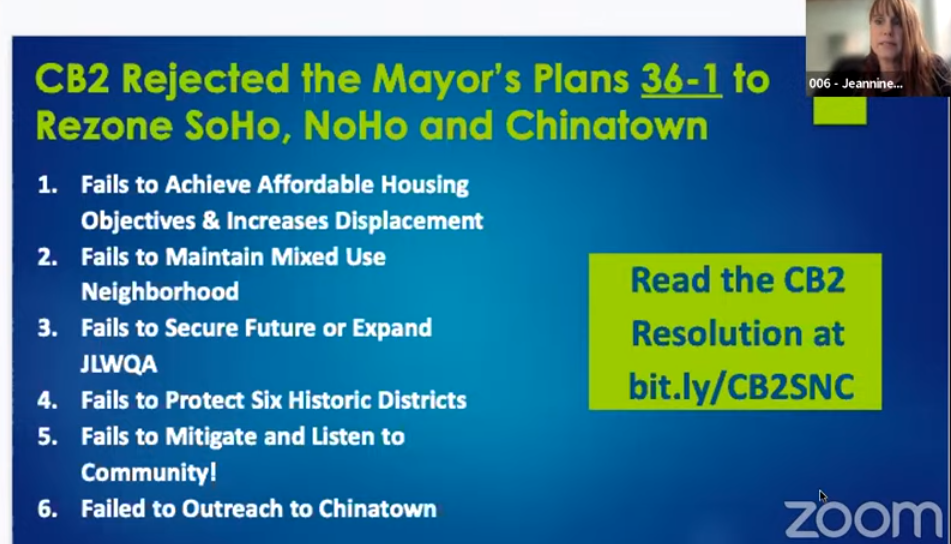
C.B. 2 had backed a residential plan for the St. John’s site that included extensive affordable housing; but the developer, Oxford Properties, instead later switched to a commercial project for the southern half of the site. As for Duarte Square, Trinity initially assured the community that it would develop a residential tower there with a public school in its base, but later swapped in an office tower instead. As of now, though, the site is still an open lot, home to Gitano, which neighbor Darlene Lutz later described as, “a banging outdoor party bar with booze and burlesque.”
Google it: Affordable housing gone
Similarly, Emily Hellstrom, the co-op board president of the largest residential co-op on Broadway in Soho, decried the St. John’s project as a “debacle.”
“Put a pause on this and fix it,” she said of the Soho/Noho rezoning. “One only has to look at the St. John’s debacle that saw affordable housing vanish when our elected officials did a deal with Google. This rezoning is a REBNY [Real Estate Board of New York] giveaway, wrapped in a retail bailout, cloaked in faux social justice, so that anyone who opposes it is labeled a racist,” she said.
The rezoning’s supporters repeatedly called Soho and Noho “white and wealthy.”
Eviction by construction
Pete Davies, who also lives on Broadway in Soho, where he is a leader of the Broadway Residents Coalition, warned that the rezoning would lead to “eviction by construction.” Vertical enlargements would be allowed on top of existing buildings, like his own, which would be eligible for a whopping 70,000-square foot rooftop addition.
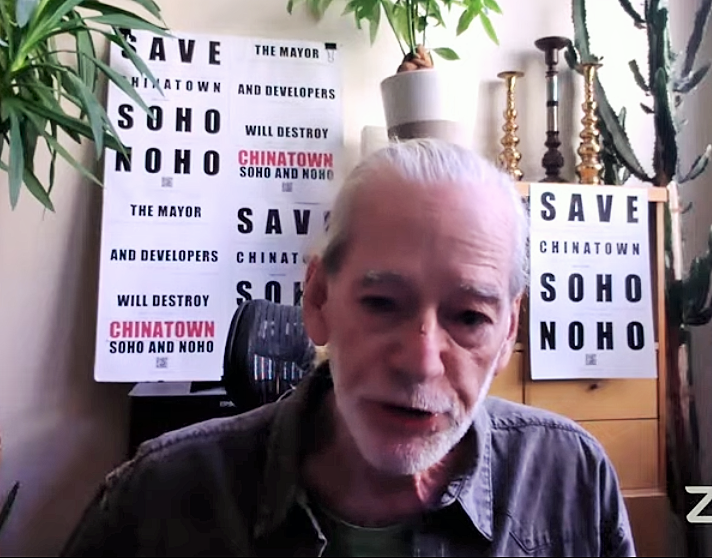
“A world of pain is in our future, it’s a dark future,” Davies said, adding, “The only way they could do it would be to drive steel piles” through the existing building. That kind of disruptive construction, he said, would force residents out of their homes.
Anita Brandt, the chairperson of the C.B. 2 Soho/Noho Working Group, said of the plan, “It will result in a tornado of construction, demolition and displacement. The promise of affordable housing attempts to disguise that this plan will reduce affordability and result in bland office towers.”
Historic district precedent
The Open New York members and also Jessica Katz, executive director of Citizens Housing and Planning Council, at times spoke from the same talking points, all saying, for example, that Soho and Noho cannot be “frozen in amber.” However, most of the rezoning area is, in fact, covered by historic districts, which are protected by landmarking.
And yet, Todd Fine, president of the Washington Street Historical Society, pointed out that the city’s Landmarks Preservation Commission does not seem to have had any part in the Soho/Noho rezoning process at all.
“We’re talking about the top historic district in the world. You will be a laughing stock,” he warned the Planning commissioners. “[The process] needs to be started again, with the Landmarks Preservation Commission [included]. You cannot endanger New York history this way.”
Richard Moses, the head of the Lower East Side Preservation Initiative, said, “Historic districts are so popular precisely because of their low building heights and low densities.”
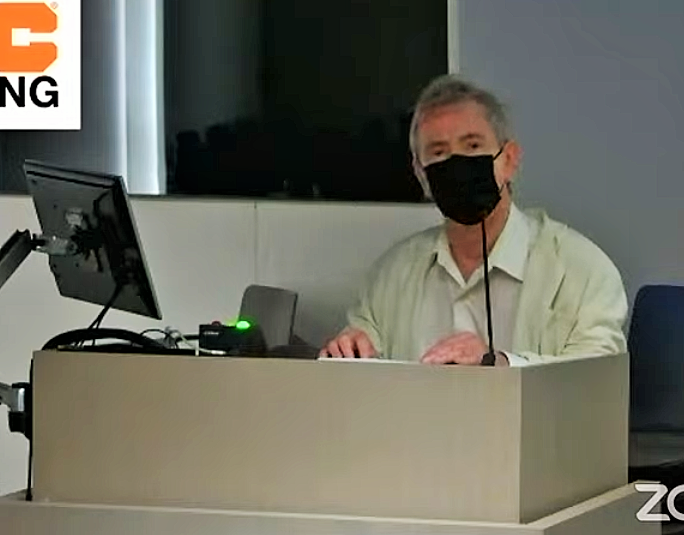
As Lora Tenenbaum, a longtime Soho resident, put it, “Will people come here when it looks like Midtown South?”
Former Councilmember Kathryn Freed moved into Soho in 1969. She went on to represent Lower Manhattan’s District 1 from 1992 to 2001. She personally oversaw and crafted many of Soho and Noho’s protections.
“The rezoning should have included a no-demolition clause,” Freed stressed, “especially since it will result in a lot of demolition in the Chinatown area. The old Landmarks Preservation Commission would have never allowed that, and they never did. It seems like this is the first salvo against landmarks and the demolition of landmarks.”
The Soho/Noho rezoning, if approved, would be the first upzoning of a New York City historic district.
Ground zero for Big Real Estate
But the rezoning’s supporters see Soho, Noho and Chinatown — chic, world-renowned areas long desired by developers — as a crucial beachhead. Simply, nowhere else in the city will do, as far as they are concerned.
As Dan Miller, one of the Open New Yorkers, put it: “If we can’t rezone this neighborhood to provide more housing, then where can we? If we can’t build housing here, then we’re just giving up on the idea of building housing in New York City at all.” He, in turn, lashed out at the aging artists who pioneered once-gritty Soho and Noho, saying they just want “to sit on their unearned real estate profits because they bought property in 1978.”

Another Open New Yorker, in his own unique logic, argued why it makes sense to open the floodgates to development in Soho, Noho and Chinatown: “Market-rate units will help absorb the rich from working-class neighborhoods to one that can absorb them.” In other words, make a wealthy neighborhood even wealthier.
In response to a commissioner’s question about the rezoning’s potential for residential displacement, Katz of C.H.P.C. maintained, “By our calculation, the displacement risk is much higher by doing nothing.”
BIDs back bigger big-box stores
Meanwhile, business interests in Soho and Noho support retail zoning changes to allow mega-big-box stores, yet are sympathetic to local residents’ concerns about upzoning to allow buildings two-and-a-half-times larger than the current norm.

Cordelia Persen, executive director of the Noho Business Improvement District, said the BID supports the rezoning’s call for removing the district’s cap on store size.
“End the arbitrary 10,000-square-foot limit, which makes no sense for the size of our floor plates,” she said.
Persen, though, conceded that Noho “probably doesn’t need such high commercial F.A.R.”
Similarly, Mark Dicus, the executive director of the Soho Broadway Initiative BID, said, “We don’t think 10,000 square feet [for store size] is some magic line that, when you go past it, you get quality-of-life problems.”
He added that the BID backs legalizing ground-floor retail in the area, which currently requires a special application.
Chinatown is now ‘Soho East’?
Speakers representing Chinatown slammed the rezoning for the impact it would have on what it dubs “Soho East.” Although the plan includes roughly five blocks of Chinatown, or about 10 percent of the rezoning’s total area, that spot would see 43 percent of the initial development, according to City Planning.
“I’m mad!” fumed Zishun Ning, co-chairperson of the Chinatown Working Group. “More racism! The city has the audacity to incentivize developers. This is a displacement plan and it’s destroying affordable housing in Soho, Noho, Chinatown and the Lower East Side.
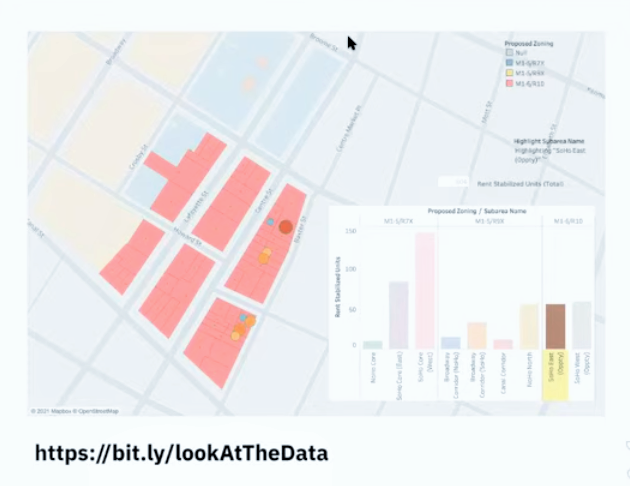
“We are invisible to you!” Ning seethed at the Planning commissioners. “You still keep saying ‘Soho and Noho’ [rezoning] as if Chinatown does not exist! Is this how the city addresses racism by displacing people of color? All those who pretend this is a social-justice plan should be ashamed of themselves for covering up Mayor de Blasio’s racist displacement agenda.”
Similarly, Fannie Ip, who grew up in Chinatown’s Confucius Plaza, a high-rise limited-equity co-op, said, “Chinatown will be destroyed if this plan goes through. This plan will displace many of the elderly, the weak and the working class. This is also a racist plan and Chinatown isn’t even included in the name of the plan. This plan was thought up by racists, put together by racists…with a handful of corrupted politicians that are in bed with developers.”
Activist: ‘Putting a target on tenants’ backs’
Michael McKee, the treasurer of Tenants PAC and a veteran tenant activist, said the biggest threat posed by the rezoning is demolition of existing affordable housing. Like others, he noted that, under one option, developers could simply keep existing buildings’ facades and gut the interiors.
“You are putting a target on the back of rent-stabilized, rent-controlled and loft tenants by increasing the F.A.R.,” McKee warned. “Demolition is costly, but if the incentive is great enough, they will do it.
“Your staff has basically pooh-poohed this,” he chided the Planning commissioners. “I’m telling you, it’s going to happen.”
McKee said the historic tenant-law reforms passed in Albany in 2019 neglected to deal with the risk of demolition.
Longtime locals: ‘It won’t work’
A bunch of longtime artist residents hung in till the end and were among the last to testify at the marathon hearing.
While taking away existing affordable housing, the plan would not provide any amenities to the open-space-starved community in return, artist Susan Stoltz, a 40-year Soho resident, stressed.
“The community has been offered nothing,” she said, “not a senior center, not a blade of grass.”
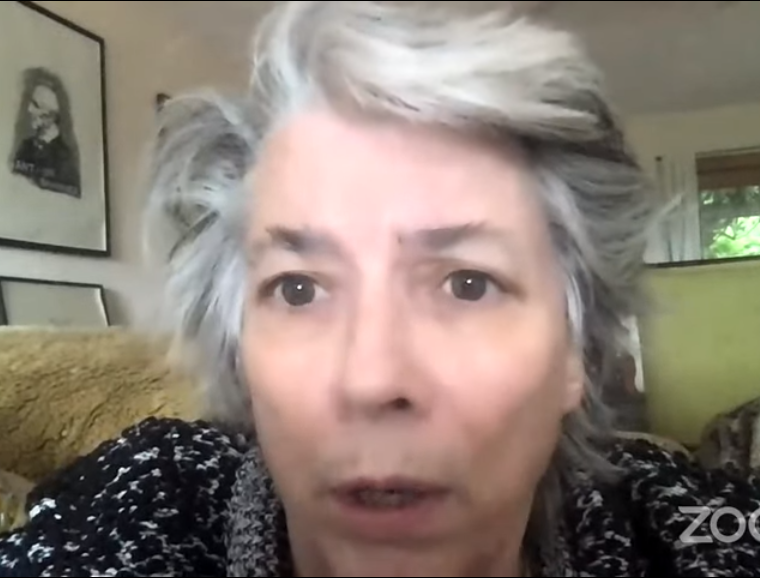
“The reason we’re against this plan is not because we’re racists or NIMBYists — [as in] ‘not in our backyard,’” said Julie Harrison. “It’s because we’ve been around long enough to know it won’t work.”
She said she can remain in Soho only thanks to her rent-regulated apartment, while the new homes in the rezoning plan would not be within her reach.
“I would not be able to afford even the affordable housing in this neighborhood,” she said.
Joan Melnick said ultimately Soho and Noho became affluent because City Hall turned a blind eye to the area’s unique requirement for its residents to be certified artists recognized by the Department of Cultural Affairs. That laxity allowed wealthy nonartists — hedge-funders, bankers, lawyers and the like — to move in to the trendy Downtown neighborhoods.
“I have watched the way this city has basically created this monster,” Melnick said. “There was a time when it was all artists here — and they were pushed out, because there was no enforcement of the artist requirement.”
But the city’s rezoning plan is definitely not the answer, in her view.
“The idea of tearing down buildings to create new affordable housing is beyond me,” she said.


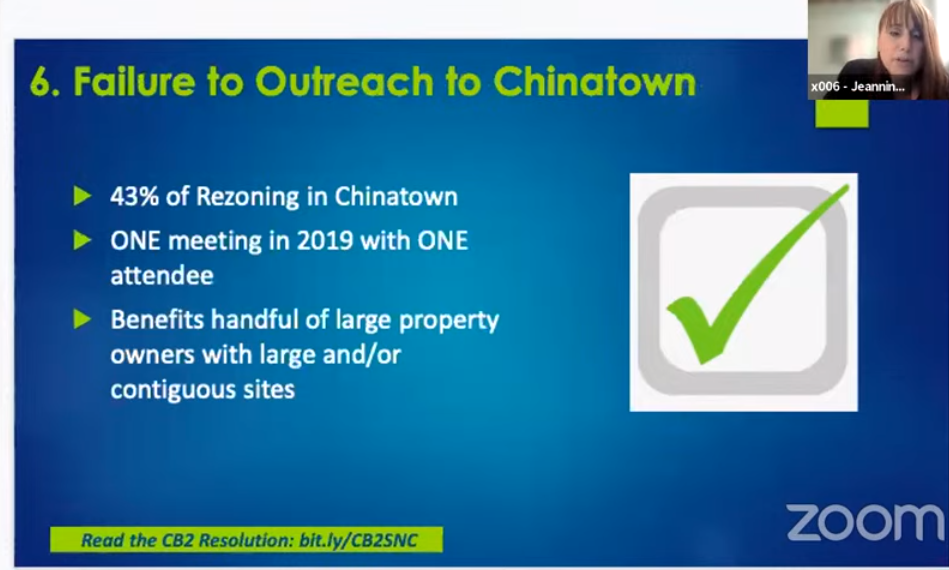
We’ve spent seventy years downzoning rich areas like Soho and the West Village. (All you need to do is google “downzoning West Village.”)
Have those areas become affordable? I don’t think so. Maybe it’s time to try something new.
If the City Planning Commission ignores all the testimony (9 out of 10 against) they should all be fired but of course they won’t be because 6 out of 12 of them were appointed by de Blasio.
BTW, the testimony of Zishun Ning of the Chinatown Working Group was so powerful, moving and right on.
Chin, Rivera and Johnson; God help us.
The Fab Three notoriously disregard the constituents who elected them.
They trip over themselves to enable the self-absorbed, de Blasio.
Enuf! The City Planning Commission cannot ignore this hue and cry against the ill-advised de Blasio sellout.
Question: Does Julia Harrison look like she’s in SoHo? A lot of trees outside her window….and she claims the city isn’t offering a “blade of grass” in exchange for the rezoning. Mark me confused!